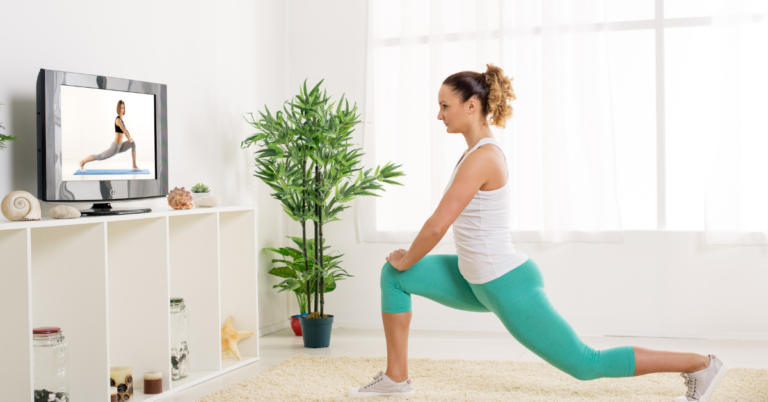Your Immune System Needs Some Extra Love Right Now
BY: jmontague
Health Information
COMMENTS: No Comments
6 Ways to Support Your Child’s Health and Wellbeing
BY: Dr Carrie
Health Information
COMMENTS: No Comments
Maintaining Good Posture
We often hear that good posture is essential for good health. We recognize poor posture when we see it formed as a result of bad habits carried out over years and evident in many adults. But only few people have a real grasp of the importance and necessity of good posture.
What is posture?
Posture is the position in which we hold our bodies while standing, sitting, or lying down. Good posture is the correct alignment of body parts supported by the right amount of muscle tension against gravity. Without posture and the muscles that control it, we would simply fall to the ground.
Normally, we do not consciously maintain normal posture. Instead, certain muscles do it for us, and we don’t even have to think about it. Several muscle groups, including the hamstrings and large back muscles, are critically important in maintaining good posture. While the ligaments help to hold the skeleton together, these postural muscles, when functioning properly, prevent the forces of gravity from pushing us over forward. Postural muscles also maintain our posture and balance during movement.
Why is good posture important?
Good posture helps us stand, walk, sit, and lie in positions that place the least strain on supporting muscles and ligaments during movement and weight-bearing activities. Correct posture:
- Helps us keep bones and joints in correct alignment so that our muscles are used correctly, decreasing the abnormal wearing of joint surfaces that could result in degenerative arthritis and joint pain.
- Reduces the stress on the ligaments holding the spinal joints together, minimizing the likelihood of injury.
- Allows muscles to work more efficiently, allowing the body to use less energy and, therefore, preventing muscle fatigue.
- Helps prevent muscle strain, overuse disorders, and even back and muscular pain.
To maintain proper posture, you need to have adequate muscle flexibility and strength, normal joint motion in the spine and other body regions, as well as efficient postural muscles that are balanced on both sides of the spine. In addition, you must recognize your postural habits at home and in the workplace and work to correct them, if necessary.
Consequences of poor posture
Poor posture can lead to excessive strain on our postural muscles and may even cause them to relax, when held in certain positions for long periods of time. For example, you can typically see this in people who bend forward at the waist for a prolonged time in the workplace. Their postural muscles are more prone to injury and back pain.
Several factors contribute to poor posture–most commonly, stress, obesity, pregnancy, weak postural muscles, abnormally tight muscles, and high-heeled shoes. In addition, decreased flexibility, a poor work environment, incorrect working posture, and unhealthy sitting and standing habits can also contribute to poor body positioning.
Can I correct my posture?
In a word, yes. Remember, however, that long-standing postural problems will typically take longer to address than short-lived ones, as often the joints have adapted to your long-standing poor posture. Conscious awareness of your own posture and knowing what posture is correct will help you consciously correct yourself. With much practice, the correct posture for standing, sitting, and lying down will gradually replace your old posture. This, in turn, will help you move toward a better and healthier body position.
Your doctor of chiropractic can assist you with proper posture, including recommending exercises to strengthen your core postural muscles. He or she can also assist you with choosing proper postures during your activities, helping reduce your risk of injury.

How do I sit properly?
- Keep your feet on the floor or on a footrest, if they don’t reach the floor.
- Don’t cross your legs. Your ankles should be in front of your knees.
- Keep a small gap between the back of your knees and the front of your seat.
- Your knees should be at or below the level of your hips.
- Adjust the backrest of your chair to support your low- and mid-back or use a back support.
- Relax your shoulders and keep your forearms parallel to the ground.
- Avoid sitting in the same position for long periods of time.
How do I stand properly?
- Bear your weight primarily on the balls of your feet.
- Keep your knees slightly bent.
- Keep your feet about shoulder-width apart.
- Let your arms hang naturally down the sides of the body.
- Stand straight and tall with your shoulders pulled backward.
- Tuck your stomach in.
- Keep your head level-your earlobes should be in line with your shoulders. Do not push your head forward, backward, or to the side.
- Shift your weight from your toes to your heels, or one foot to the other, if you have to stand for a long time.
What is the proper lying position?
- Find the mattress that is right for you. While a firm mattress is generally recommended, some people find that softer mattresses reduce their back pain. Your comfort is important.
- Sleep with a pillow. Special pillows are available to help with postural problems resulting from a poor sleeping position.
- Avoid sleeping on your stomach.
- Sleeping on your side or back is more often helpful for back pain. If you sleep on your side, place a pillow between your legs. If you sleep on your back, keep a pillow under your knees.
Article by American Chiropractic Association
BY: jmontague
Chiropractic / Health Information
COMMENTS: No Comments



